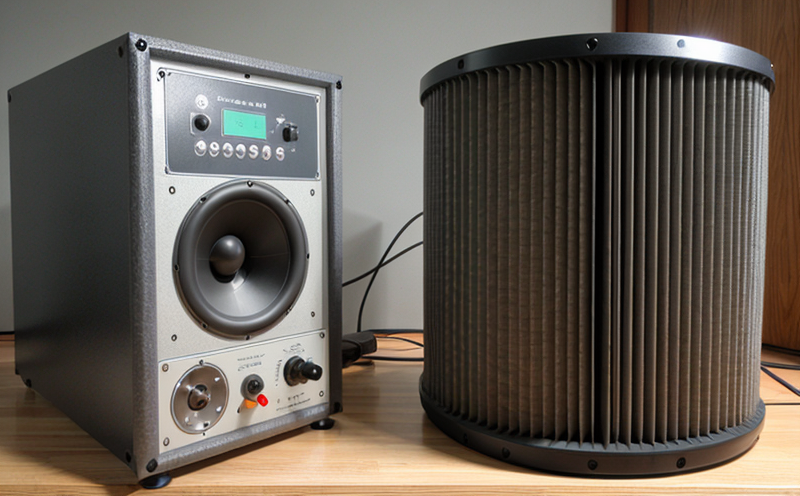ISO 15016 Sea Trial Measurement of Noise & Vibration
The ISO 15016 standard provides a framework for the measurement and evaluation of noise and vibration during sea trials. This service ensures that marine equipment meets stringent international standards, thereby enhancing safety, performance, and compliance. The test is critical for manufacturers, quality managers, R&D engineers, and procurement officers who are responsible for ensuring the reliability and robustness of marine equipment.
The ISO 15016 sea trial involves a series of rigorous steps to evaluate noise and vibration levels on board ships and other maritime vessels. During these trials, various instruments measure sound pressure levels (SPL) at different locations within the vessel. The data collected is then analyzed against established thresholds to determine compliance with international standards.
One of the key challenges in conducting ISO 15016 sea trials lies in ensuring accurate measurement under real-world conditions. Factors such as wind, wave motion, and engine noise can significantly impact the readings. To mitigate these issues, advanced noise and vibration sensors are deployed strategically throughout the vessel. These sensors capture data continuously during the trial, providing a comprehensive picture of the acoustic environment.
The process begins with meticulous preparation of the equipment to be tested. This includes ensuring all instruments are calibrated according to ISO standards before deployment. During the sea trial itself, engineers monitor various parameters including engine RPM, speed, and direction while recording noise levels at multiple points on the vessel. Post-trial analysis involves comparing these measurements against predefined acceptance criteria outlined in ISO 15016.
Compliance with this standard is not just about meeting regulatory requirements; it also contributes to improving overall vessel performance by identifying potential areas for improvement early in the design or operational phase. By adhering strictly to ISO guidelines, manufacturers can ensure that their products perform reliably under challenging maritime conditions while maintaining comfort levels aboard.
Furthermore, successful completion of an ISO 15016 sea trial enhances a company’s reputation among clients and stakeholders by demonstrating commitment to quality assurance practices. It also facilitates easier compliance with local regulations without additional costs or delays associated with non-compliance penalties.
Scope and Methodology
The scope of ISO 15016 sea trial measurement encompasses the evaluation of noise and vibration generated by various components of a marine vessel during its operational phase. Specifically, this includes assessing sound pressure levels (SPL) in both stationary and mobile configurations.
- Sound Pressure Levels: Measured using specialized microphones placed strategically around the vessel to capture ambient noise accurately.
- Vibration Analysis: Utilizes accelerometers attached directly onto critical parts like engines, propellers, and machinery systems to gauge their vibratory response.
- Environmental Factors: Considerations include ambient temperature, humidity, salt content in air/water, which can affect sensor performance.
The methodology adheres strictly to ISO 15016 specifications ensuring consistent results across different vessels and testing environments. It involves setting up test protocols prior to embarkation, executing trials under controlled conditions whenever possible, and performing post-trial data processing using statistical tools provided in the standard.
Throughout the entire process, emphasis is placed on accuracy and repeatability of measurements. This ensures that any discrepancies identified can be attributed solely to equipment or environmental factors rather than procedural variations.
Benefits
- Enhanced Safety: Ensures operators remain within safe noise and vibration limits specified by international standards.
- Better Performance: Identifies sources of unwanted sound or excessive vibrations allowing for targeted improvements in design.
- Compliance Assurance: Helps avoid costly penalties due to non-compliance with local maritime regulations.
- Improved Comfort: Reduces discomfort experienced by crew members and passengers through effective noise management strategies.
In addition, successful completion of an ISO 15016 sea trial can lead to significant cost savings in terms of maintenance costs over the lifespan of a vessel. By identifying issues early on, repairs become less frequent and more efficient, thus extending the useful life of equipment.
Why Choose This Test
- International Recognition: Adherence to ISO 15016 ensures that your product meets global standards recognized worldwide.
- Expertise and Experience: Our team of experts has extensive experience in conducting these tests ensuring accurate results every time.
- Comprehensive Reporting: Detailed reports are provided summarizing all findings along with recommendations for improvement where necessary.
- Quick Turnaround Times: We understand the importance of timely delivery, hence our testing processes are designed to minimize delays wherever possible.
By choosing our ISO 15016 sea trial measurement service, you not only demonstrate a commitment to excellence but also gain valuable insights into how your product performs in real-world scenarios. This information can be invaluable when making decisions regarding future product developments or modifications aimed at enhancing performance and user satisfaction.





